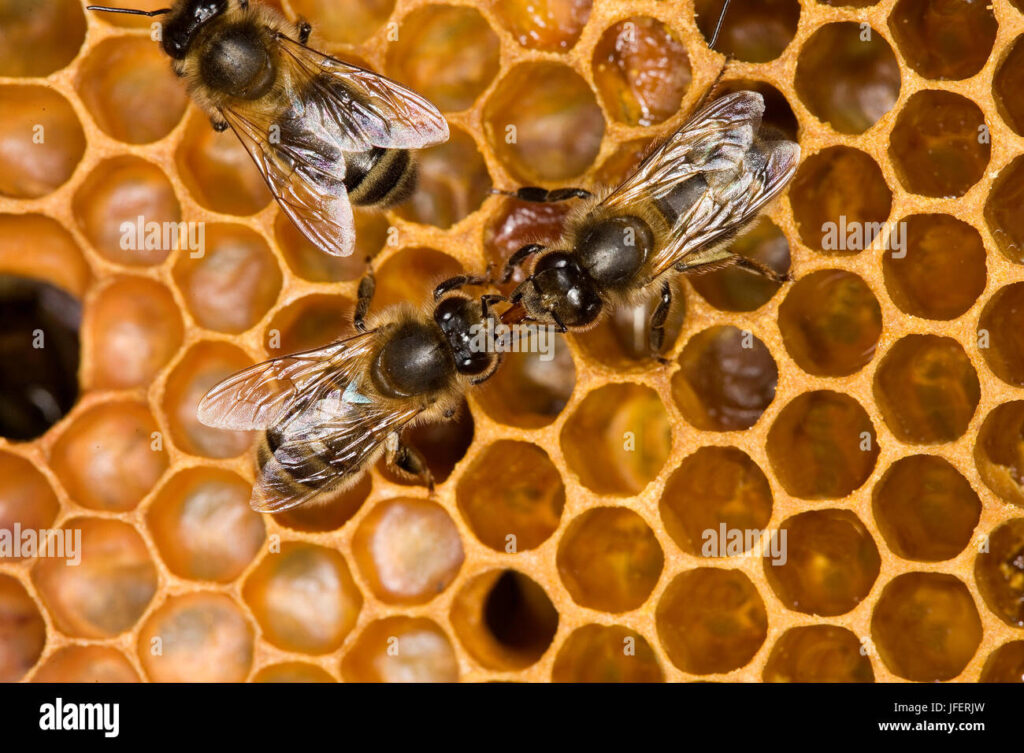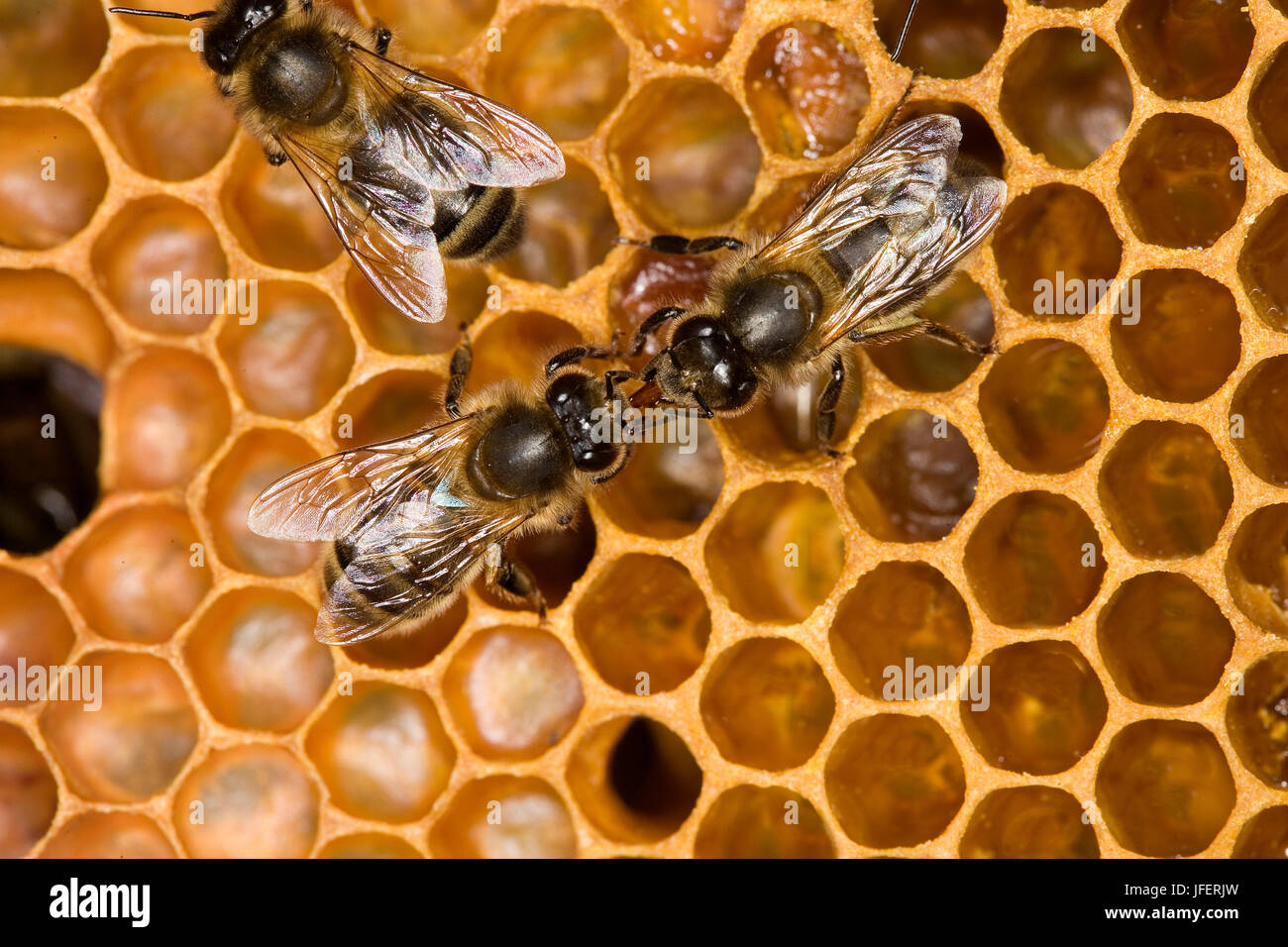
Bee Larvae in Honey: An Unexpected Delicacy or a Contaminant?
The presence of bee larvae in honey is a topic that often evokes a mix of curiosity and concern. While most consumers expect honey to be a pure, golden nectar produced by bees, the reality is that honey can sometimes contain small amounts of other bee-related components, including bee larvae. This article delves into the science behind this phenomenon, exploring whether the presence of bee larvae in honey poses a health risk, and examining the cultural perspectives surrounding this potentially unexpected ingredient.
What Are Bee Larvae?
Bee larvae are the immature, developing stages of bees. They hatch from eggs laid by the queen bee within the honeycomb cells. These larvae are fed a rich diet of royal jelly and bee bread (a mixture of pollen and honey) by worker bees, enabling them to grow rapidly. Once the larva reaches a certain size, it pupates within its cell, eventually emerging as an adult bee. The life cycle of a bee is crucial for the colony’s survival and the production of honey.
How Do Bee Larvae End Up in Honey?
The presence of bee larvae in honey is generally accidental. During the honey extraction process, which involves removing honey from the honeycomb frames, it is possible for a few bee larvae or eggs to be inadvertently included. This can happen if the honeycomb contains brood (developing bees) and the beekeeper isn’t meticulously careful during extraction. Modern honey processing techniques aim to minimize this, but it’s nearly impossible to eliminate the possibility entirely.
Is It Safe to Eat Bee Larvae in Honey?
The safety of consuming bee larvae in honey is a question often asked. From a nutritional standpoint, bee larvae are a rich source of protein, amino acids, and vitamins. In some cultures, bee larvae are considered a delicacy and are intentionally harvested for consumption. However, the key concern is the potential for allergic reactions. Individuals with known allergies to bees or bee products should exercise caution, as consuming honey containing bee larvae could trigger an allergic response. For most people, the small quantities of bee larvae potentially present in commercially processed honey are unlikely to cause harm. However, if you have any allergy concerns, it is always best to consult with a medical professional.
Cultural Perspectives on Bee Larvae Consumption
While the idea of eating bee larvae in honey might seem unusual to some, it is a practice with a long history in various cultures. In some indigenous communities, bee larvae are considered a valuable food source, offering essential nutrients. For example, in some parts of Asia and Africa, bee larvae are harvested and prepared in various ways, from being roasted to being incorporated into soups and stews. These cultural practices highlight the diverse ways in which humans interact with and utilize the resources provided by bees. In contrast, in Western cultures, the presence of bee larvae in honey is often viewed as a sign of impurity or contamination, leading to concerns about product quality. This difference in perception underscores the importance of understanding the cultural context when discussing the consumption of bee larvae.
The Nutritional Value of Bee Larvae
Beyond cultural considerations, the nutritional value of bee larvae is noteworthy. Bee larvae are a concentrated source of protein, containing all essential amino acids necessary for human health. They are also rich in vitamins, including B vitamins, which play a crucial role in energy metabolism and nerve function. Additionally, bee larvae contain minerals such as iron, zinc, and calcium, which are essential for various physiological processes. The high nutritional content of bee larvae makes them a potentially valuable food source, especially in regions where protein deficiency is a concern. Research into the nutritional benefits of bee larvae is ongoing, with potential applications in food security and sustainable agriculture.
Honey Processing and Quality Control
Honey producers implement various quality control measures to minimize the presence of foreign materials, including bee larvae, in their products. These measures include careful inspection of honeycomb frames before extraction, the use of filtration systems to remove debris, and adherence to strict hygiene standards during processing. While these measures can significantly reduce the likelihood of bee larvae ending up in the final product, it is virtually impossible to eliminate the risk entirely. Consumers can also play a role in ensuring honey quality by purchasing honey from reputable sources and inspecting the product for any visible impurities before consumption.
The Role of Beekeepers in Preventing Contamination
Beekeepers play a critical role in preventing contamination of honey with bee larvae. Responsible beekeepers employ careful hive management practices to minimize the presence of brood in honey supers (the frames intended for honey storage). This includes using queen excluders to prevent the queen bee from laying eggs in the honey supers, and regularly inspecting the hives to identify and remove any brood that may have been inadvertently placed in the wrong frames. Proper hive management not only reduces the risk of bee larvae contamination but also promotes the overall health and productivity of the bee colony. By prioritizing responsible beekeeping practices, beekeepers can ensure that the honey they produce is of the highest quality and free from unwanted contaminants.
Consumer Perceptions and Expectations
Consumer perceptions of honey quality are largely shaped by cultural norms and expectations. In many Western cultures, consumers expect honey to be a pure, golden liquid, free from any visible impurities. The presence of bee larvae, even in small amounts, can be perceived as a sign of poor quality or contamination, leading to consumer dissatisfaction. However, in cultures where bee larvae are considered a delicacy, consumers may have a more accepting view of their presence in honey. Educating consumers about the natural processes involved in honey production and the potential presence of trace amounts of bee larvae can help to manage expectations and promote a more informed understanding of honey quality. Transparency in labeling and marketing can also play a crucial role in building consumer trust.
The Future of Bee Larvae as a Food Source
As the global population continues to grow, there is increasing interest in exploring alternative and sustainable food sources. Bee larvae, with their high nutritional value and relatively low environmental impact, are emerging as a promising option. Research into the potential of bee larvae as a food source is ongoing, with studies focusing on optimizing rearing methods, processing techniques, and product development. If bee larvae can be produced and marketed in a sustainable and appealing way, they could play a significant role in addressing food security challenges and promoting a more diverse and resilient food system. This includes addressing potential allergen concerns and ensuring the safety and quality of bee larvae products. [See also: Honey Production Methods]
Conclusion
The presence of bee larvae in honey is a complex issue with both potential risks and benefits. While the thought of consuming bee larvae may be off-putting to some, they are a nutritious food source that is consumed in various cultures around the world. The key lies in understanding the context, ensuring proper processing and quality control, and being aware of potential allergic reactions. As we continue to explore sustainable food options, bee larvae may play an increasingly important role in our diets. Whether it’s viewed as an unexpected delicacy or a potential contaminant depends largely on individual perspectives and cultural norms. Ultimately, informed consumers can make educated choices about the honey they consume and appreciate the intricate relationship between bees and the food they provide.

